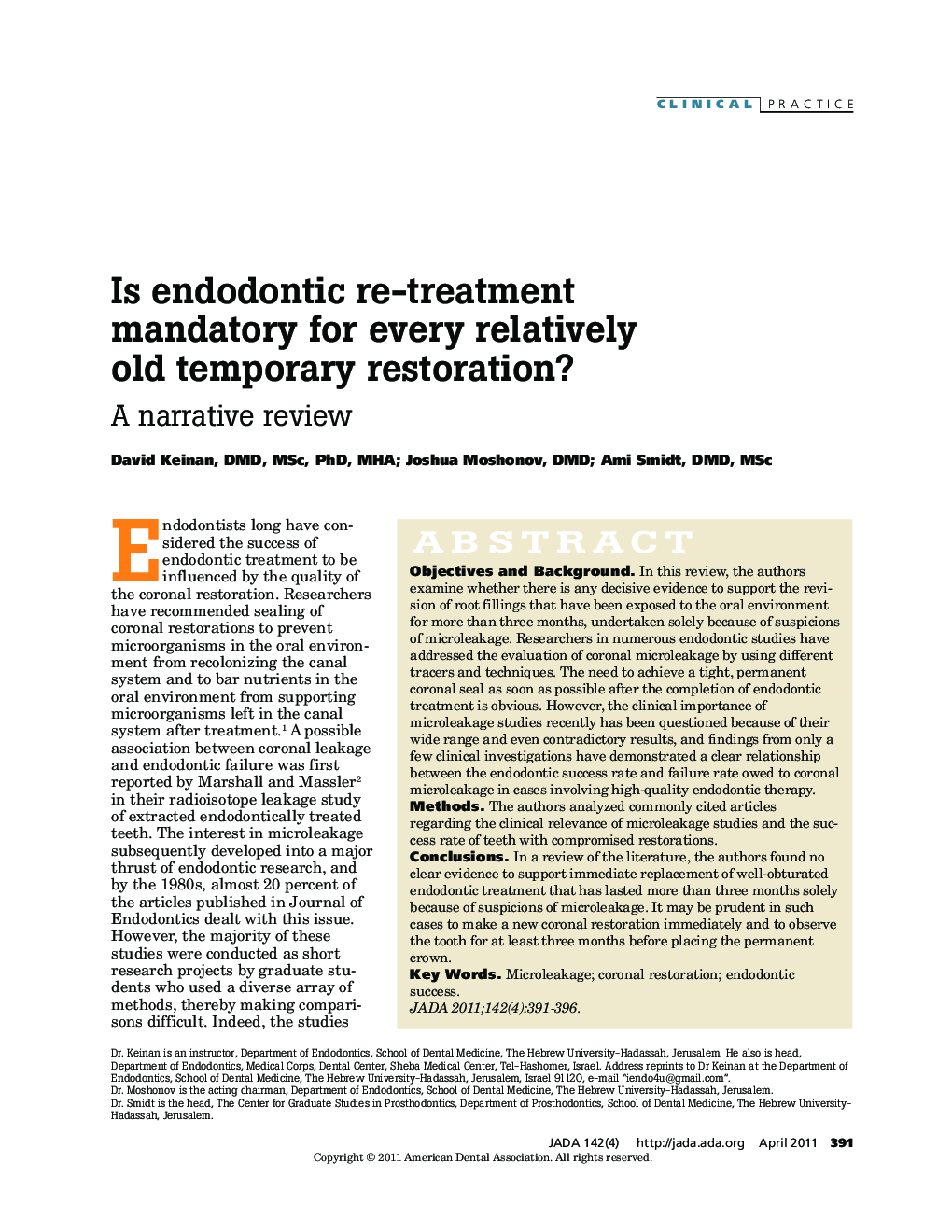| Article ID | Journal | Published Year | Pages | File Type |
|---|---|---|---|---|
| 3138166 | The Journal of the American Dental Association | 2011 | 6 Pages |
ABSTRACTObjectives and BackgroundIn this review, the authors examine whether there is any decisive evidence to support the revision of root fillings that have been exposed to the oral environment for more than three months, undertaken solely because of suspicions of microleakage. Researchers in numerous endodontic studies have addressed the evaluation of coronal microleakage by using different tracers and techniques. The need to achieve a tight, permanent coronal seal as soon as possible after the completion of endodontic treatment is obvious. However, the clinical importance of microleakage studies recently has been questioned because of their wide range and even contradictory results, and findings from only a few clinical investigations have demonstrated a clear relationship between the endodontic success rate and failure rate owed to coronal microleakage in cases involving high-quality endodontic therapy.MethodsThe authors analyzed commonly cited articles regarding the clinical relevance of microleakage studies and the success rate of teeth with compromised restorations.ConclusionsIn a review of the literature, the authors found no clear evidence to support immediate replacement of well-obturated endodontic treatment that has lasted more than three months solely because of suspicions of microleakage. It may be prudent in such cases to make a new coronal restoration immediately and to observe the tooth for at least three months before placing the permanent crown.
